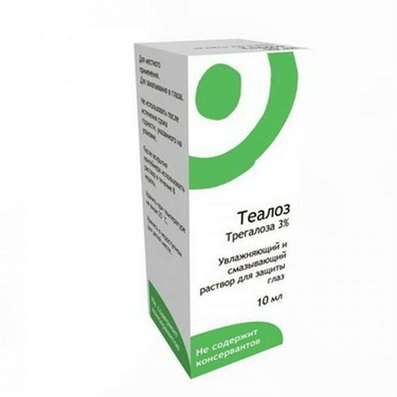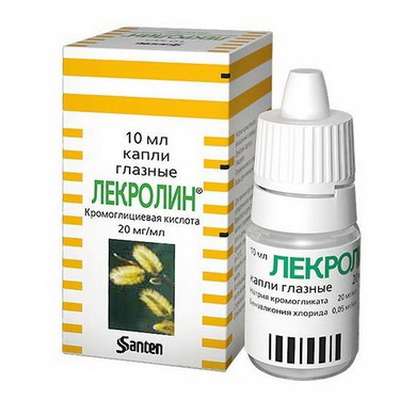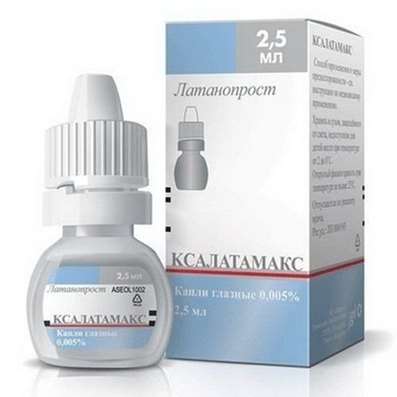Instruction for use: Ridelat-C
I want this, give me price
Active substance: Atracurium besylate
ATX Code
M03AC04 Atracurium besylate
Pharmacological group
Nondepolarizing muscle relaxant of peripheral action [n-anticholinergics (muscle relaxants)]
The nosological classification (ICD-10)
Z100.0 * Anesthesiology and premedication
nasogastric intubation, The relaxation of skeletal muscles, Controlled breathing under anesthesia, Anesthesia, Anesthesia in ENT practice, Anaesthesia in Dentistry, Hypotension during spinal anesthesia, ataralgesia, Basic anesthesia, Fast anesthesia, Introduction to anesthesia, Induction, inhalation anesthesia, Inhalation anesthesia for large and small surgery, Induction and maintenance of general anesthesia, intraligamentarnaya anesthesia, tracheal intubation, caudal anesthesia, Caudal blockade, mixed anesthesia, Short-term anesthesia, Short-term infiltration anesthesia in surgery, Short-term local anesthesia, Spinal anesthesia, Local anesthesia, Local infiltration anesthesia, Local surface anesthesia, monokomponentny anesthesia, anesthesia, Neingalyatsionnyh anesthesia for operative delivery, Immediate pain relief, general anesthesia, General anesthesia with short-term surgical interventions, General anesthesia, Period premedication, Surface anesthesia in ophthalmology, Maintenance of anesthesia, anocithesia, conduction anesthesia, Regional anesthesia, mixed anesthesia, Spinal anesthesia, spinal anesthesia, Spinal anesthesia, permeation anesthesia, epidural anesthesia, IVL, Artificial hibernation, Short-term muscle relaxation, Miorelaxation, Miorelaxation during mechanical ventilation, Miorelaxation during surgery, Miorelaxation in operations, Miorelaxation during mechanical ventilation, Excitation before surgery, cardioplegia, Preoperative period
Z40 Prophylactic surgical intervention
Inhalation anesthesia, Intratracheal Intubation, Intubation of the trachea, Surface anesthesia in ophthalmology
Z40.9 Prophylactic surgical intervention, unspecified
Description of dosage form
Transparent or almost transparent solution from colorless to light yellow color.
pharmachologic effect
Pharmacological action - miorelaksiruyuschee, n-holinoliticheskoe, antidepolarizuyuschee.
Pharmacodynamics
Mechanism of action
Atracuria bezylate is a highly selective, non-depolarizing muscle relaxant of a competitive type of action. Atracuria besylate blocks the n-cholinergic receptor of the neuromuscular synapse and prevents the binding of acetylcholine to it, which makes it impossible to stimulate the muscle fiber and reduce it. Promotes the release of histamine.
Atracuria besylate does not directly affect IOP (it is applicable in ophthalmic surgical practice.)
Pharmacokinetics
Metabolism
Atracurium bezylate is inactivated by elimination of Hofmann (a process that occurs at physiological pH and temperature values without the participation of enzymes) and by ether hydrolysis with the participation of nonspecific esterases. Plasma studies in patients with a low level of pseudocholinesterase showed that the products of atra- caria bezilate metabolism do not change.
Changes in the pH values of the blood and body temperature in the physiological range have little effect on the duration of action of atracurium bezylate.
Excretion
The duration of neuromuscular blockade caused by the administration of atracurium bezilate is not dependent on its metabolism in the liver or kidneys or excretion. Therefore, it is unlikely that the duration of action of the drug varies with violations of the kidneys, liver or circulatory disorders.
Special patient groups
Hemofiltration and hemodiafiltration have a minimal effect on the concentrations of atracurium besylate and its metabolites (including laudanosine) in blood plasma. The effect of hemodialysis and hemoperfusion on the concentration of atracurium besylate and its metabolites in blood plasma is unknown.
In patients with impaired renal and / or liver function in the intensive care unit (ICU), higher concentrations of atra- kurium besylate metabolites were observed. Metabolites do not affect neuromuscular conduction.
indications
As a component of general anesthesia to ensure intubation of the trachea and relaxation of skeletal muscles during surgical interventions or controlled ventilation of the lungs and to facilitate ventilation in patients in the ICU.
Contraindications
Hypersensitivity to atracurium besylate, cisatracuria or benzenesulfonic acid, to any other components of the drug;
Known hypersensitivity to histamine.
pregnancy and lactation
Studies in animals have shown that the use of atracurium besylate does not significantly affect the development of the fetus.
Like other muscle relaxants, Ridelat®-C should be used during pregnancy only if the potential benefit to the mother exceeds any possible risk to the fetus.
Ridelat®-C can be used for the purpose of miorelaxation in a caesarean section. When prescribed in recommended doses of atracurium, besylate does not penetrate the placental barrier in clinically significant amounts.
Breastfeeding period
There are no data on the penetration of atracurium bezylate into breast milk.
Fertility
The effect on fertility has not been studied.
Side effects
The undesirable reactions presented below are listed in accordance with the damage to organs and organ systems and frequency of occurrence. Frequency of occurrence is defined as follows: very often (≥1 / 10); Often (≥1 / 100 and <1/10); Infrequently (≥1 / 1000 and <1/100); Rarely (≥1 / 10000 and <1/1000); Very rarely (<1/10000); Unknown (frequency can not be set based on available data). Frequency categories - very often, often and infrequently - were formed on the basis of clinical studies of atracurium bezilate. Frequency categories - rarely, very rarely - were formed on the basis of spontaneous reports.
Clinical trial data
From the side of the vessels: often - a decrease in blood pressure (light, transient) *, skin hyperemia *.
From the respiratory system, chest and mediastinum: infrequently - bronchospasm *.
* Adverse reactions associated with the release of histamine.
Post-registration data
From the side of the immune system: very rarely - anaphylactic and anaphylactoid reactions, including shock, circulatory failure and cardiac arrest. Very rarely reported severe anaphylactic or anaphylactoid reactions in patients taking atracurium besylate in combination with one or more anesthetics.
From the side of the nervous system: it is unknown - convulsions. There have been reports of cases of seizures in patients in the ICU who were prescribed atrauria besylate in combination with some other drugs. Typically, these patients had one or more conditions predisposing to the occurrence of seizures, such as head trauma, cerebral edema, viral encephalitis, hypoxic encephalopathy, uremia. Causal relationship between the occurrence of seizures and laudanosine is not established. As a result of clinical studies, the correlation between plasma concentrations of laudanosine and the onset of seizures has not been established.
From the skin and subcutaneous tissues: rarely - hives.
From the musculoskeletal and connective tissue: unknown - myopathy, muscle weakness. Several cases of muscle weakness and / or myopathy have been reported with prolonged use of muscle relaxants in critically ill patients in ICU. Most of them simultaneously received SCS. These undesirable reactions were rare, a cause-and-effect relationship with the use of atracurium bezilate was not established.
Interaction
Atrakurium-induced besylate neuromuscular blockade may be exacerbated by the use of agents for inhalation anesthesia such as halothane, isoflurane, enflurane. As with the use of other nondepolarizing muscle relaxants, it is possible to increase the intensity and / or duration of the neuromuscular blockade as a result of interaction with the following drugs:
- antibiotics, including aminoglycosides, polymyxins, spectinomycin, tetracyclines, lincomycin and clindamycin;
- Antiarrhythmics: propranolol, calcium channel blockers, lidocaine, procainamide and quinidine;
- Diuretics: furosemide and, possibly, mannitol, thiazide diuretics and acetazolamide;
- magnesium sulfate;
- ketamine;
- lithium salts;
- ganglion blockers: trimetaphane, hexamethonium.
In rare cases, certain drugs cause an exacerbation of myasthenia, contribute to the development of myasthenia from the latent form, as well as the myasthenic syndrome, in which it is possible to increase the sensitivity to atracurium bezilate. These drugs include various antibiotics, β-adrenoblockers (propranolol, oxprenolol), antiarrhythmics (procainamide, quinidine) and antirheumatic drugs (chloroquine, D-penicillamine), trimetaphan, chlorpromazine, steroids, phenytoin and lithium salts.
The development of neuromuscular blockade caused by nondepolarizing muscle relaxants is likely to slow down, and its duration decreases in patients receiving anticonvulsant therapy for a long time.
The combined use of nondepolarizing neuromuscular blockers and atracurium bezilate may cause an excessive blockade compared with the expected one-atrachium besylate in an equipotential cumulative dose. The depolarizing muscle relaxant suxamethonium chloride should not be used to prolong the neuromuscular blockade caused by nondepolarizing muscle relaxants, such as atracurium bezylate, as this can cause a prolonged and complex blockade, which is difficult to suppress with anticholinesterase agents.
Therapy with anticholinesterase drugs often used to treat Alzheimer's disease (eg donepezil) can shorten the duration of neuromuscular blockade and weaken the blocking effect of atracurium bezylate.
Pharmaceutical compatibility
The drug Ridelat®-C is compatible with the following solutions for infusion (at a concentration of 0.5-0.9 mg / ml in daylight and temperature up to 30 ° C); Solution of sodium chloride 0.9% for iv administration - for at least 24 hours, 5% dextrose for iv administration 8 hours, Ringer's injection solution 8 hours, sodium chloride solution 0.18%, and dextrose 4% for intravenous administration - 8 hours, Hartman's solution for IV administration - 4 hours.
Dosing and Administration
Adults
In / in, injectively. Ridelat®-C is administered IV in the form of injections. For adults, the range of Ridelat®-C doses is 0.3-0.6 mg / kg (depending on the required duration of the complete blockade), which provides adequate myoplegia within 15-35 minutes.
After intravenous administration at doses of 0.5-0.6 mg / kg, endotracheal intubation can be carried out, as a rule, after a lapse of 90 seconds.
If it is necessary to prolong the complete neuromuscular blockade, Ridelat®-C is administered in a dose of 0.1-0.2 mg / kg. The correct administration of additional doses of the drug does not lead to an increase in the myorelaxing effect.
Spontaneous recovery of conduction after complete neuromuscular blockade occurs approximately after 35 minutes, which is determined by restoring the tetanic contraction to 95% of normal neuromuscular function.
Neuromuscular blockade caused by atracurium can be quickly eliminated by the use of anticholinesterase agents in standard doses such as neostigmine and eudrophonia, combined with simultaneous or preliminary administration of atropine (without the appearance of signs of recurrence).
In / in, infuzionno. After an initial bolus dose of 0.3-0.6 mg / kg, Ridelat®-C can be used to maintain neuromuscular blockade during prolonged surgical intervention by prolonged infusion at a rate of 0.3-0.6 mg / kg / h.
Ridelat®-C can be administered by infusion during cardiopulmonary bypass surgery at the rate recommended for infusion. With induced hypothermia with a body temperature of 25 to 26 ° C, the rate of inactivation of the drug Ridelat®-C decreases, that is, in order to maintain complete miorelaxation at low temperatures, the infusion rate is reduced approximately 2-fold.
Children
For children aged 2 years and older, Ridelat®-C is administered in the same doses as adults, in terms of body weight.
The initial dose of the drug Ridelat®-C, used in children aged 1 month to 2 years with halothane anesthesia, is 0.3-0.4 mg / kg. Children may require more frequent use of maintenance doses than adults.
Patients of advanced age
Ridelat®-C can be used in standard doses in elderly patients. However, it is recommended to use the initial dose, which is less than the lower value of the dose range, and inject the drug slowly.
Patients with impaired renal and / or liver function
Ridelat®-C can be used in standard doses for any degree of impaired liver or kidney function, including end-stage insufficiency.
Patients with cardiovascular diseases
In patients with cardiovascular diseases with severe clinical symptoms, the initial dose of Ridelat-C should be administered within 60 seconds.
ICU patients
After the administration of Ridelat®-C in the initial bolus dose of 0.3-0.6 mg / kg, if necessary, the drug can be used to maintain neuromuscular blockade through prolonged infusion at a rate of 11-13 μg / kg / min (0, 65-0.78 mg / kg / h). However, there are wide interindividual differences in the dosing regimen. Dosage regimen can vary with time. Some patients may require both a low infusion rate of 4.5 μg / kg / min (0.27 mg / kg / h) and a high infusion rate of 29.5 μg / kg / min (1.77 mg / kg / hr ).
The rate of spontaneous recovery after neuromuscular blockade at the end of infusion of Ridelat®-C in ICU patients does not depend on the duration of administration. Spontaneous recovery of neuromuscular conduction (the ratio of the height of the fourth to the first twitch in the train-of-four test T4 / T1> 0.75) usually occurs after about 60 minutes. In clinical trials, this period ranges from 32 to 108 min after the infusion of atracurium bezylate, and its rate does not depend on the duration of administration of the drug.
Instruction for breeding
The solution of Ridelat®-C when diluted with compatible infusion solutions until atraquarium besylate concentration is not less than 0.5 mg / ml remains stable for a specified period of time under normal illumination at temperatures up to 30 ° C.
Overdose
Symptoms: Prolonged muscle paralysis and its consequences.
Treatment: mechanical ventilation under positive pressure to restore spontaneous breathing. It is necessary to use sedatives, because the consciousness of patients is not violated.
Once signs of spontaneous recovery appear, it can be accelerated with anticholinesterase drugs in combination with atropine or glycopyrrolate.
special instructions
Like other muscle relaxants, atracurium besylate causes paralysis of the respiratory muscles, as well as skeletal muscles, but does not affect consciousness. The drug Ridelat®-C should be administered only with general anesthesia under the careful supervision of a qualified anesthesiologist with equipment for intubation of the trachea and ventilation.
In predisposed patients, atracurium bezylate can cause the development of reactions associated with the release of histamine. Caution should be exercised when administering Ridelat®-C to patients with a history of hypersensitivity to histamine. In particular, bronchospasm may occur in patients with a history of allergy or bronchial asthma.
Caution is also required when a Ridelat®-C preparation is administered to patients who have experienced hypersensitivity reactions to other muscle relaxants. A high incidence of cross-sensitivity between muscle relaxants (more than 50%) was revealed (see "Contraindications").
For patients suffering from bronchial asthma who receive high doses of GCS and muscle relaxants in ICU, consideration should be given to the possibility of multiple monitoring of the content of CK.
When applied in the recommended dose range of atracurium, besylate does not cause a significant blockade of the vagus nerve and nerve ganglia. Consequently, atracurium bezylate in the recommended dose range does not have a clinically significant effect on heart rate and does not prevent bradycardia caused by many anesthetics or vagal nerve stimulation during surgery.
As with other non-depolarizing muscle relaxants, hypophosphatemia can slow the recovery of muscle conduction. Recovery can be accelerated by correcting this state.
As with other muscle relaxants, severe acid-base balance disturbances and / or impaired balance of blood serum electrolytes may increase or decrease the sensitivity of patients to the Ridelat®-C preparation.
As with other non-depolarizing muscle relaxants, hypersensitivity to atracurium bezilate can be observed in patients with severe myasthenia gravis, other neuromuscular diseases and severe electrolyte balance disorders.
Patients with a tendency to a sharp decrease in blood pressure, for example with hypovolemia, Ridelat®-C is recommended to enter for more than 60 seconds.
Atracuria bezylate is inactivated in an alkaline medium, and therefore the preparation Riedelat®-C can not be mixed in one syringe with thiopental or any alkaline solutions. If the administration of Ridelat-C is done in a vein of small caliber, then after injection, it should be washed with saline. When injecting anesthetics through the same injection needle or cannula, it is important that each drug is washed off with an appropriate amount of saline.
The solution of the drug Ridelat®-C is hypotonic, and it can not be administered simultaneously through a single system with blood transfusion.
Studies of malignant hyperthermia in predisposing animals (pigs) and clinical studies in patients susceptible to malignant hyperthermia show that atracurium bezylate does not cause this syndrome.
As with the use of other non-depolarizing muscle relaxants, patients with burns may develop resistance during the appointment of Ridelat®-C. In such cases, an increase in the dose may be required, the magnitude of which depends on the time elapsed after the burn, and on the surface area of the burn.
The introduction of laboratory animals in large doses of laudanosine, the metabolite of atracurium bezilate, was associated with a transient decrease in blood pressure, and in some species of animals with cerebral stimulatory effects. Seizures in the ICU that received atracurium bezylate showed cramps, however, the cause-and-effect relationship of their development with laudanosine (metabolite of atracurium bezylate) has not been established (see "Side effects").
Impact on the ability to drive vehicles and other mechanisms that require increased concentration. The drug Ridelat®-C is always used only for general anesthesia, excluding these activities.
Relies Form
Solution for intravenous administration, 10 mg / ml
5 ml in ampoules of colorless neutral glass with a color fracture ring or with a colored dot and a notch. One, two or three color rings and / or a two-dimensional bar code, and / or alphanumeric coding or without additional color rings, a two-dimensional bar code, an alphanumeric code are additionally applied to the ampoules.
At 5 amp. In a planar cell box made of a PVC film and aluminum foil, or a polymer transparent film, or without an aluminum foil and a polymer film. 1 or 2 contour squares are placed in a pack of cardboard.
In the case of production of the drug at LLC "COMPANY DECO": 5 ml in ampoules of colorless neutral glass with a color fracture ring or with a color dot and a notch. One, two or three color rings and / or a two-dimensional bar code, and / or alphanumeric coding or without additional color rings, a two-dimensional bar code, an alphanumeric code are additionally applied to the ampoules.
At 5 or 10 amp. In a planar cell box made of a PVC film and aluminum foil, or a polymer transparent film, or without an aluminum foil and a polymer film. 1 contour mesh package is placed in a pack of cardboard.
Conditions of supply of pharmacies
On prescription.
Storage conditions
In the dark place at a temperature of 2-8 ° C (do not freeze).
Keep out of the reach of children.
Shelf life
2 years.
Do not use after the expiry date printed on the package.

 Cart
Cart





